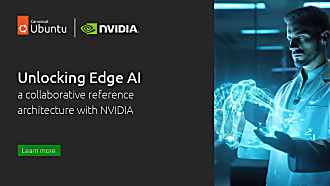Andreea Munteanu
on 18 May 2023
The public sector is investing heavily on artificial intelligence and machine learning initiatives. Deloitte AI Institute reported that 60% of government AI and data analytics investments aim to directly impact real-time operational decisions and outcomes by 2024. From automating redundant tasks to increasing the quality of services offered to citizens, public sector institutions have a wide range of applications where they could implement AI.
Use cases for AI in the public sector
There are multiple use cases for the public sector and government institutions to benefit from artificial intelligence and machine learning. Many of them use different data sources and have different requirements. What are the most common ones?

Smart cities
Smart cities became a popular topic a couple of years ago, with many governments investing a large amount of money and resources into them. These investments translate into improvements to analyse the traffic flow, reduce carbon emissions or enhance alerts from surveillance cameras.
Thanks to advancements in computer vision, object detection or object tracking algorithms are now more performant. Most of these use cases use multiple data sets that include videos, images and structured data. The main challenges are related to the high volume of data that needs to be processed, the security of the data and the real-time processing that is required for many of the applications. Investments in smart cities enable organisations to perform different activities such as:
- Analyse crash data to highlight the areas with higher chances for accidents
- Optimise street lights to reduce traffic congestion
- Automatically alert authorities in case of any incident
- Optimise energy consumption
Besides smart cities, government institutions also have a momentous task to improve healthcare outcomes, especially following the pandemic. AI/ML can contribute to advancements in this area too.
Healthcare improvements
Medical science is always ripe for research and development. We discussed the importance of securing MLOps for the life science industry at the most recent Kubecon conference, but there is a wider spectrum of use cases for artificial intelligence and machine learning in healthcare. Governments can leverage AI to provide more effective health services, from monitoring the spread of disease to tracking patients’ health or optimising medicine planning and distribution.
Often these projects use highly sensitive data. Therefore, special attention is needed to secure all the artifacts, follow compliance standards and ensure multi-tenancy capabilities. Most of the time, these algorithms use numerical data, medical images and sensor data for different use cases. Example outcomes include:
- Detecting different diseases more quickly by using medical images
- Optimising medical records management by analysing historical records
- Performing robot-assisted surgery
Logistics and transportation
Major cities around the world face huge issues regarding logistics management, traffic congestion or transportation. A sustainable transportation system is one of the reasons why many governments are considering innovative solutions and technologies, including artificial intelligence.
Whereas some countries are considering building AI-powered cities, the sharing economy led to the quick rise of applications such as Uber. Computer vision techniques are now used by public sector institutions for a wide range of applications such as automated self-driving vehicles, traffic management or intelligent shipping. The challenge comes from the need to often process data in real-time, as well as improve data quality to drive better results.
The future of AI in the public sector
While there are multiple applications for AI/ML within the public sector, there are still challenges to overcome, related to the use of legacy systems and lack of data. Nowadays, by using Robotic Process Automation (RPA), computer vision or natural language processing (NLP) organisations are focusing more on digitising paperwork and automating redundant tasks. Yet, identifying patterns related to both public health and climate change will become ever more important.
Some of these use cases will take time to bear fruit, as governments need to gather more trustworthy data. Having projects that are production-ready motivates institutions to grow their AI investments. Ideas such as the “city of the future” are just some of the applications that are going to go from science fiction to fact in the upcoming years.
Speed up AI impact with Machine Learning Operations (MLOps)
Public sector institutions that want to achieve their AI/ML objectives need to look more closely at productising their projects by adopting MLOps. Machine learning operations (MLOps) represent a set of practices that aim to simplify workflow processes and automate machine learning and deep learning deployments. It accomplishes the deployment and maintenance of models reliably and efficiently for production, at a large scale.

MLOps enables the development and deployment of machine learning models, helping public sector organisations make progress with their initiatives. Tools such as Charmed Kubeflow allow professionals to perform their entire activity within one tool. Charmed Kubeflow automates machine learning workflows, translating them into Kubernetes jobs. It can run on any Kubernetes and any environment, letting public sector institutions to focus on the problem they solve, rather than the tooling itself.

Learn more about MLOps
- [Whitepaper] A guide to MLOps
- [Solution brief] Enterprise AI at scale with NVIDIA and Canonical
- [Blog] From data-centric to model-centric MLOps
- AI on Ubuntu
- Ubuntu AI on Medium



